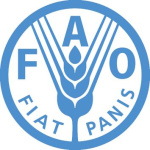- Industria: Agriculture
- Number of terms: 87409
- Number of blossaries: 0
- Company Profile:
Established in October 1945 with the objective of eliminating hunger and improving nutrition and standards of living by increasing agricultural productivity, FAO coordinates the efforts of governments and technical agencies in programs for developing agriculture, forestry, fisheries, and land and ...
Members of a pair showing different, rather than similar, characteristics.
Industry:Biotechnology
Members of the pairs adenine-thymine, adenine-uracil, and guanine-cytosine that have the ability to hydrogen bond to one another.
Industry:Biotechnology
Meristem of the shoot or root tip giving rise to the primary plant body.
Industry:Biotechnology
Metabolic products not having a known functional or structural use in plant cells. They have been extracted from plant tissue cultures for pharmaceutical and food processing purposes (e.g., essential oils, food additives, flavours).
Industry:Biotechnology
Method by which a therapeutic agent is delivered to its site of action. For traditional therapeutic agents this is another name for <i>formulation</i>. However, biotechnology has allowed the development of a range of new therapeutic-agent delivery systems, such as liposomes and other encapsulation techniques, and a range of mechanisms that target a therapeutic agent to a particular cell or tissue.
Industry:Biotechnology
Micro-organism aggregate or colloidal particle floating in or on a liquid. Contaminated liquid media are usually cloudy, illustrating this flocculation phenomenon.
Industry:Biotechnology
Microscopic to sub-microscopic cellulose thread that is part of the cellulose matrix of plant cell walls.
Industry:Biotechnology
Microsporangium bearing microspores which develop into pollen (microgametophytes). The upper part of a stamen, containing pollen sacs within which are numerous pollen grains.
Industry:Biotechnology
Milk sugar, a disaccharide with one unit each of glucose and galactose.
Industry:Biotechnology
Miniaturized <i>in vitro</i> multiplication and/or regeneration of plant material under aseptic and controlled environmental conditions on specially prepared media that contain substances necessary for growth; used for three general types of tissue: excised embryos (= embryo culture); shoot-tips (= meristem culture or mericloning); and pieces of tissue that range from bits of stems to roots. Four stages of plant tissue culture have been defined by Murashige:
Stage I. Establishment of an aseptic culture.
Stage II. The multiplication of propagules.
Stage III. Preparation of propagules for successful transfer to soil (rooting and hardening).
Stage IV. Establishment in soil.
Industry:Biotechnology
